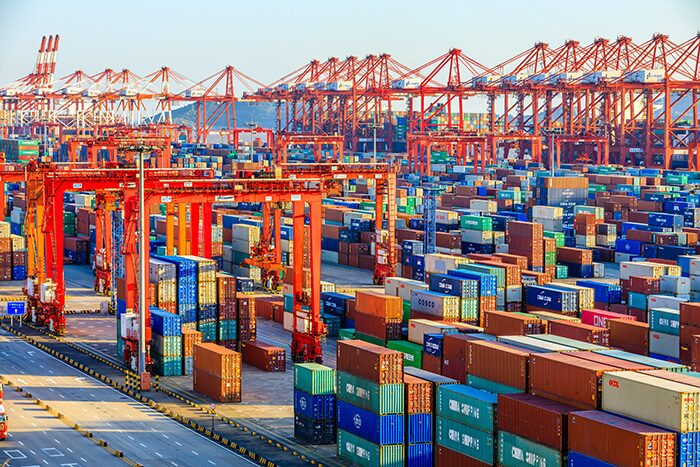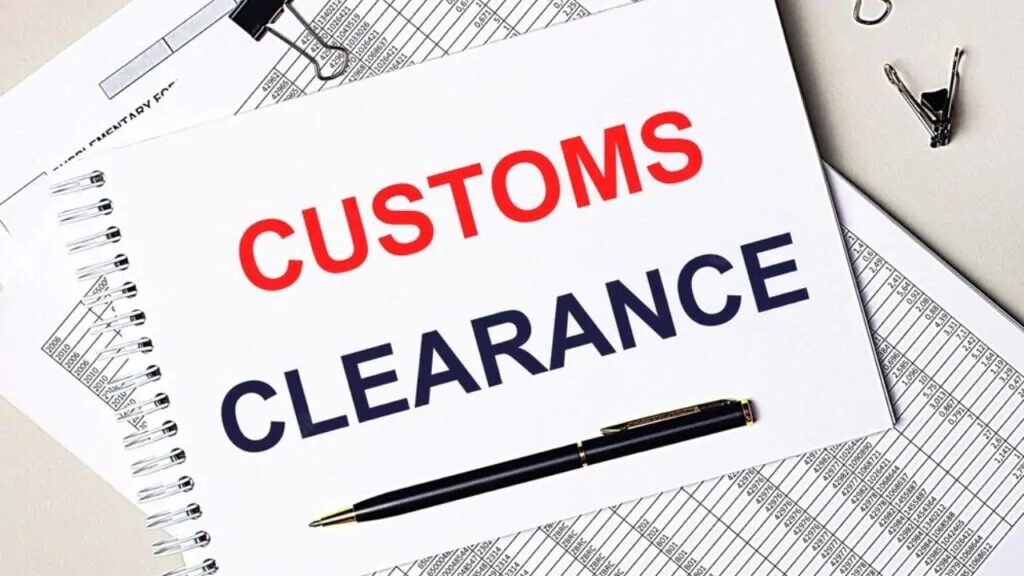Shipping from China to Belgium can be a complex and challenging process, especially for new importers. There are many factors to consider, such as the shipping method, the documentation, the customs clearance, and the costs. In this article, we will provide you with some useful tips and information to help you understand and optimize your shipping process.
Understanding the shipping process

The shipping process from China to Belgium involves several steps and parties, such as the supplier, the carrier, the customs, and the delivery agent. Here is a brief overview of the main steps:
- Step 1: The supplier prepares the goods and the packing list, and sends them to the carrier’s warehouse in China.
- Step 2: The carrier arranges the transportation of the goods from China to Belgium, either by sea, air, or rail. The carrier also issues the bill of lading, the invoice, and the certificate of origin.
- Step 3: The customs in China and Belgium inspect and clear the goods, based on the documents and the tariff codes. The customs may also charge duties and taxes, depending on the value and the origin of the goods.
- Step 4: The delivery agent collects the goods from the port or the airport in Belgium, and delivers them to the final destination.
Choosing the right shipping method

There are three main shipping methods from China to Belgium: sea freight, air freight, and rail freight. Each method has its own advantages and disadvantages, depending on the type, volume, weight, and urgency of the goods. Here is a comparison of the three methods:
Table
| Shipping Method | Transit Time | Cost | Reliability | Environmental Impact |
|---|---|---|---|---|
| Sea Freight | 30-40 days | Low | High | Low |
| Air Freight | 5-7 days | High | Medium | High |
| Rail Freight | 15-20 days | Medium | Low | Medium |
- Sea freight is the most common and economical shipping method, especially for large and heavy shipments. However, it is also the slowest and the most affected by weather and congestion. Sea freight requires a container, either a full container load (FCL) or a less than container load (LCL), depending on the size of the shipment.
- Air freight is the fastest and the most convenient shipping method, especially for small and urgent shipments. However, it is also the most expensive and the most restricted by space and regulations. Air freight requires a pallet, either a full pallet load (FPL) or a less than pallet load (LPL), depending on the weight of the shipment.
- Rail freight is a relatively new and emerging shipping method, which offers a balance between speed and cost. However, it is also the most limited and the most unpredictable, as it depends on the availability and the schedule of the trains. Rail freight requires a container, either a FCL or a LCL, depending on the size of the shipment.
Documentation and customs requirements

Documentation and customs requirements are essential for shipping from China to Belgium, as they ensure the compliance and the safety of the goods. The main documents required are:
- Packing list: A document that lists the details of the goods, such as the quantity, the description, the weight, and the dimensions.
- Invoice: A document that shows the value and the price of the goods, as well as the terms and the conditions of the sale.
- Bill of lading: A document that serves as a contract and a receipt between the carrier and the importer, as well as a proof of ownership and a delivery order for the goods.
- Certificate of origin: A document that certifies the origin and the preferential status of the goods, which may affect the duties and the taxes applied by the customs.
The customs in China and Belgium will inspect and clear the goods, based on the documents and the tariff codes. The tariff codes are numerical codes that classify the goods according to their type and origin, and determine the applicable duties and taxes. The importer can use the European Union TARIC database to find the tariff codes and the rates for the goods.
Packaging and labeling guidelines

Packaging and labeling guidelines are important for shipping from China to Belgium, as they protect the goods from damage and loss, and provide information and instructions for the carrier, the customs, and the delivery agent. The main guidelines are:
- Packaging: The goods should be packed securely and appropriately, using suitable materials and methods, such as cardboard boxes, wooden crates, plastic bags, bubble wrap, tape, and straps. The packaging should be able to withstand the handling and the transportation, and prevent the goods from shifting, breaking, or leaking.
- Labeling: The goods should be labeled clearly and correctly, using durable and legible labels, stickers, or markers. The labeling should include the following information: the name and the address of the importer and the exporter, the description and the quantity of the goods, the weight and the dimensions of the package, the shipping method and the destination, the tariff code and the origin of the goods, and any special instructions or warnings, such as “Fragile”, “Do Not Stack”, or “This Side Up”.
Tracking and managing shipments
Tracking and managing shipments are crucial for shipping from China to Belgium, as they enable the importer to monitor the status and the location of the goods, and to deal with any issues or delays that may arise. The main tools and tips are:
- Tracking number: The carrier will provide the importer with a tracking number, which is a unique code that identifies the shipment. The importer can use the tracking number to check the progress and the updates of the shipment, either on the carrier’s website, app, or customer service.
- Insurance: The importer can purchase insurance for the shipment, which is a policy that covers the loss or the damage of the goods during the transportation. The insurance can be either provided by the carrier, the supplier, or a third-party company, depending on the terms and the conditions of the sale.
- Communication: The importer should maintain regular and clear communication with the supplier, the carrier, the customs, and the delivery agent, to ensure the smooth and timely delivery of the goods. The importer should also provide accurate and complete information and documents, and respond to any requests or inquiries promptly and politely.
Managing shipping costs and optimizing for efficiency

Managing shipping costs and optimizing for efficiency are key for shipping from China to Belgium, as they help the importer to save money and time, and to improve the performance and the profitability of the business. The main strategies and factors are:
- Shipping method: The importer should choose the shipping method that best suits the needs and the budget of the business, considering the type, volume, weight, and urgency of the goods. The importer should also compare the prices and the services of different carriers, and negotiate the best rates and the terms.
- Incoterms: The importer should use the incoterms, which are international commercial terms that define the responsibilities and the risks of the importer and the exporter, such as who pays for the shipping, the insurance, and the customs. The importer should choose the incoterm that offers the most control and the least cost, such as EXW (Ex Works), FOB (Free On Board), or DDP (Delivered Duty Paid).
- Consolidation: The importer should consolidate the shipments, which means to combine multiple orders or products into one shipment, to reduce the frequency and the cost of the shipping. The importer can either consolidate the shipments from the same supplier, or from different suppliers, using a consolidation service or a freight forwarder.
- Optimization: The importer should optimize the shipments, which means to improve the efficiency and the effectiveness of the shipping process, by using tools and techniques such as data analysis, automation, forecasting, inventory management, quality control, and feedback.
Tips for smooth customs clearance

Customs clearance is one of the most challenging and critical aspects of shipping from China to Belgium, as it can affect the speed and the cost of the delivery, as well as the compliance and the reputation of the business. Here are some tips for smooth customs clearance:
- Prepare the documents: The importer should prepare the documents in advance, and make sure they are accurate, complete, and consistent. The importer should also check the requirements and the regulations of the customs in China and Belgium, and follow them strictly.
- Declare the goods: The importer should declare the goods honestly and correctly, and pay the duties and the taxes promptly and fully. The importer should also avoid under-declaring or over-declaring the value or the quantity of the goods, as this may lead to penalties or confiscation.
- Hire a broker: The importer can hire a broker, which is a professional agent that handles the customs clearance on behalf of the importer, for a fee. The broker can help the importer with the documentation, the declaration, the payment, and the communication with the customs, and solve any problems or disputes that may occur.
Working with a freight forwarder or a shipping agent

Working with a freight forwarder or a shipping agent can be a beneficial and convenient option for shipping from China to Belgium, especially for new or small importers. A freight forwarder or a shipping agent is a company that provides shipping services and solutions for the importer, such as booking the shipment, arranging the transportation, handling the documentation, and clearing the customs. A freight forwarder or a shipping agent can offer the importer the following benefits:
- Expertise: A freight forwarder or a shipping agent has the knowledge and the experience of the shipping industry, and can advise the importer on the best practices and the latest trends.
- Network: A freight forwarder or a shipping agent has the connections and the partnerships with various carriers, suppliers, and customs, and can leverage them to secure the best rates and the fastest routes.
- Convenience: A freight forwarder or a shipping agent can handle the entire shipping process from start to finish, and save the importer the time and the hassle of dealing with multiple parties and procedures.
- Flexibility: A freight forwarder or a shipping agent can tailor the shipping solutions to the specific needs and preferences of the importer, and offer a range of options and services, such as consolidation, optimization, insurance, and tracking.





